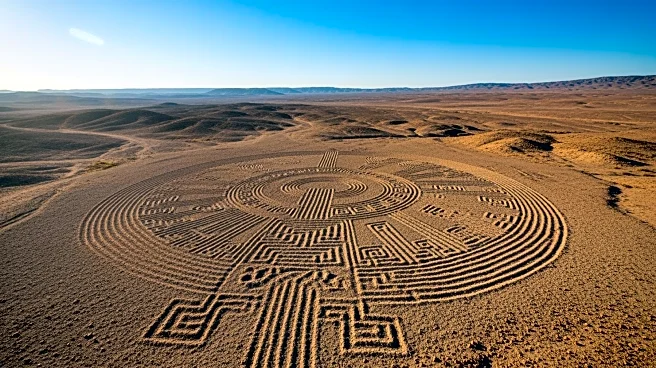What's Happening?
The 'Marree Man,' a massive geoglyph depicting an Aboriginal Australian hunter, continues to intrigue experts and the public alike. Located in the Australian outback, the geoglyph measures approximately 2 miles tall and was first discovered in 1998. Despite
its size and prominence, the origins of the Marree Man remain a mystery. The figure was initially carved into the ground using earth-moving machinery, and its creation is speculated to involve early GPS technology. Over the years, the geoglyph has been restored to preserve its outline, but the identity of its creator is still unknown.
Why It's Important?
The Marree Man represents a unique intersection of art, culture, and mystery, capturing the imagination of those interested in both ancient and modern geoglyphs. Its existence raises questions about the motivations and methods behind its creation, as well as the cultural significance of such large-scale artworks. The geoglyph also highlights the potential for modern technology to influence traditional art forms, as seen in the use of GPS for its creation. The ongoing interest in the Marree Man underscores the enduring appeal of unexplained phenomena and the human desire to uncover the stories behind them.
Beyond the Headlines
The Marree Man's mysterious origins have led to various theories, including the involvement of an Adelaide-based artist or American personnel from a nearby military base. The presence of a U.S. flag plaque and 'Americanisms' in an anonymous fax add to the intrigue. The geoglyph's restoration efforts reflect a commitment to preserving cultural landmarks, even when their origins are unclear. The Marree Man serves as a reminder of the complex interplay between art, identity, and history, and the ways in which modern interventions can shape the legacy of ancient traditions.















